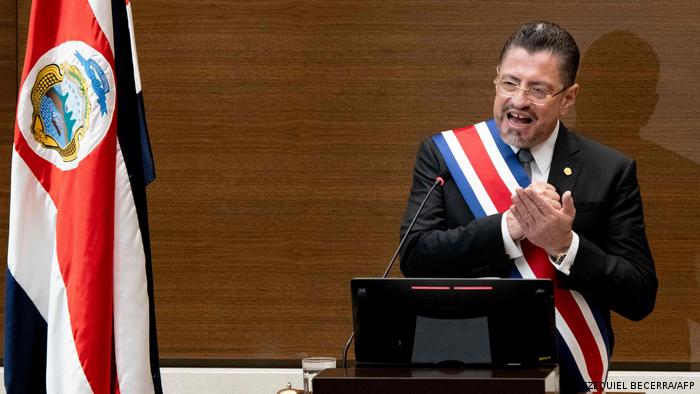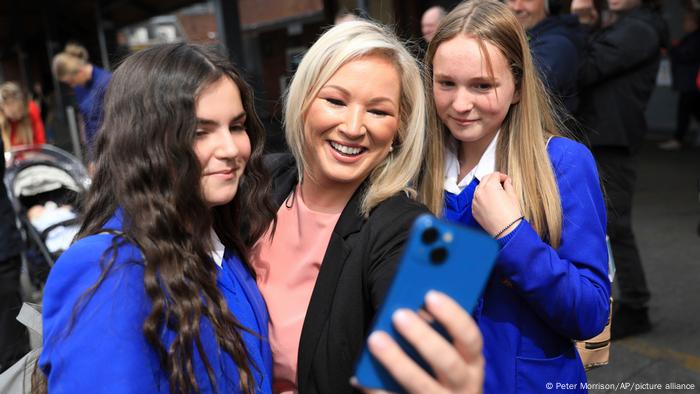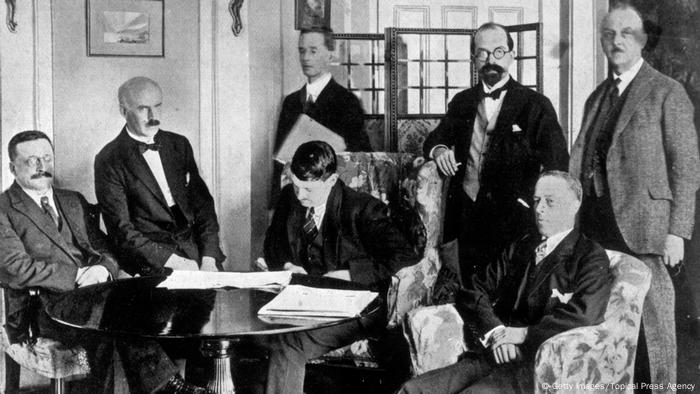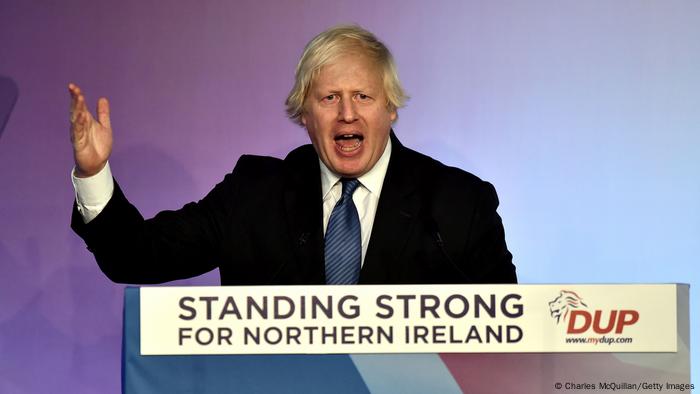"This is the most consequential election in the Philippines in the past half a century," Manila-based political analyst Richard Heydarian told UPI. "The last time we had an election of this significance, with long-term generational consequences, was in 1969 when another Marcos was on the ballot."

Presidential candidate Ferdinand "Bongbong" Marcos Jr., son of the late President Ferdinand Marcos, is the heavy favorite to win Monday's election. File Photo by Rolex Dela Pena/EPA-EFE
MANILA, May 6 (UPI) -- The Philippines' 67.5 million registered voters will head to the polls Monday to choose the successor to strongman President Rodrigo Duterte, whose checkered, controversial -- and highly popular -- six years in office come to an end after a constitutionally mandated single term.
The front-runner has a name that resonates throughout the Philippines and beyond: Ferdinand Marcos Jr., the 64-year-old son and namesake of the dictator who ruled for 20 years until being ousted by a popular uprising in 1986.
Marcos' main opponent from a field of 10 candidates is Vice President Leni Robredo, 57, a former human rights lawyer who has frequently been at odds with Duterte over policies such as his violent war on drugs. Robredo has focused her campaign on protecting democracy and cleaning up corruption in government.
The presidency is not the only up office up for grabs on Monday. Thousands of other races will be contested, from Senate seats to local and provincial posts.
A key battle will be for the position of vice president, which is held as a standalone contest. The front-runner for that race also comes from a famous political family: Sara Duterte, 43, daughter of the current president. She has formed an alliance with Marcos Jr., which has driven tremendous support to his campaign.
Marcos Jr., widely known by his nickname Bongbong, has held a commanding lead in the polls for months. A Pulse Asia survey released this week found 56% of respondents favoring Marcos Jr. to 23% for Robredo.
Boxing legend Manny Pacquiao is a distant third, with 7% support.
What's at stake
The incoming president will face numerous issues, from deep-rooted corruption to COVID-19 pandemic recovery, but campaign season has been driven by personalities, famous family ties and a heavy dose of disinformation glorifying the Marcos era.
For some observers, Monday's election represents a battle for the very future of democracy in the Philippines.
"This is the most consequential election in the Philippines in the past half a century," Manila-based political analyst Richard Heydarian told UPI. "The last time we had an election of this significance, with long-term generational consequences, was in 1969 when another Marcos was on the ballot."
After Ferdinand Marcos Sr. won that election, he went on to impose martial law, kill and imprison thousands and siphon off as much as $10 billion from the country before being driven out of office by the People Power Revolution in 1986.
"Even though it fell in 1986, the legacy of the dictatorship never went away," Heydarian said. "We're still living in its shadow."
Under Duterte, the Philippines has taken a turn back toward authoritarianism, as the populist strongman killed thousands in a drug war and has used the powers of his office to silence critics, attack the media and hobble government oversight.
Heydarian said a Marcos-Duterte tandem could continue to undermine democracy and cement their family dynasties in power for decades to come.
"[Rodrigo] Duterte didn't have the wherewithal and discipline to create a new order, but a Marcos presidency, together with Sara Duterte, will be young and disciplined enough to finish off what he started," Heydarian said. "We could be looking at the introduction of a new constitution in the coming years."
The candidates
Ferdinand Marcos Jr.
After being exiled in 1986, the Marcos clan returned home in the 1990s and its members have reintegrated themselves into the mainstream of Philippine life and politics. Flamboyant former first lady Imelda Marcos, now 92, served in congress until 2019. Bongbong was governor of his family's home province of Ilocos Norte and later became a congressman and senator.
Bongbong's campaign has been boosted by coordinated online disinformation efforts, according to fact checkers, that have sought to whitewash the Marcos Sr. legacy as well as spread negative information about his opponents.
Tsek.ph, a collaborative fact-checking project, found that 94% of the false information posts it analyzed about Robredo were negative.
"Disinformation has been more pervasive than it has been in past elections," Rachel Khan, associate dean of the University of the Philippines College of Media Communication and coordinator of Tsek.ph, told UPI.
Khan said the false information about the Marcos family has been almost uniformly positive and has evolved to target voters too young to remember the martial law era on platforms such as TikTok.
"There has been an effort for historical revisionism showing that the Marcos years were the golden years of the Philippines," Khan said.
Leni Robredo
Robredo worked as a human rights lawyer and entered politics after her husband, who served as secretary of the interior, died in a plane crash in 2012. She won a seat in congress in 2013 before defeating Bongbong Marcos for the vice presidency in 2016, becoming the second woman to hold the office.
She has focused on human rights and gender equality during her political career and is campaigning on restoring the rule of law, but has trailed Marcos Jr. in the polls throughout.
Her supporters haven't given up hope, however. Robredo has picked up a wave of endorsements from athletes, celebrities and even political leaders from Duterte's home province of Mindanao. Her candidacy has also been bolstered by a grass-roots movement of some 2 million door-to-door volunteers and a series of high-energy rallies in recent weeks.
On Saturday, the final day of campaigning, organizers are expecting as many as 1 million supporters to turn out for a rally in downtown Manila that they hope will help push Robredo across the finish line to an upset victory.
Marcos Jr eyes landslide as Philippines votes for new president


2 / 6
Ten candidates are vying to succeed President Rodrigo Duterte in the elections seen by many as a make-or-break moment for Philippine democracy


2 / 6
Ten candidates are vying to succeed President Rodrigo Duterte in the elections seen by many as a make-or-break moment for Philippine democracy
(AFP/CHAIDEER MAHYUDDIN)
Millions of Filipinos thronged primary schools and other polling stations Monday to elect a new president, with the son of former dictator Ferdinand Marcos the favourite to win the high-stakes election.
Nearly 40 years after the patriarch was deposed by a popular revolt and the family chased into exile, Ferdinand Marcos Junior looks set to complete their remarkable comeback from pariahs to the peak of political power.
Ten candidates are vying to succeed President Rodrigo Duterte in elections seen by many as a make-or-break moment for the Philippines' fragile democracy.
But only Marcos Jr and his rival Leni Robredo, the incumbent vice president, have a credible chance of winning.
People wearing masks began forming long queues before dawn to cast their votes when polling stations opened across the archipelago.
At Mariano Marcos Memorial Elementary School in the northern city of Batac, the ancestral home of the Marcoses, voters waved hand fans to cool their faces in the tropical heat.
Bomb sniffer dogs swept the polling station before Marcos Jr arrived with his younger sister Irene and eldest son Sandro.
They were followed by the family's flamboyant 92-year-old matriarch Imelda, who was lowered from a white van while wearing a long red top with matching trousers and slip-on flats.
Sandro, 28, who is running for elected office for the first time in a congressional district in Ilocos Norte province, admitted the family's history was "a burden".
But he added: "It's one that we also try to sustain and protect and better as we serve."
Casting her ballot for Robredo at a school in Magarao municipality, in the central province of Camarines Sur, Corazon Bagay said the former congresswoman "deserves" to win.
"She has no whiff of corruption allegations," said the 52-year-old homemaker. "She's not a thief. Leni is honest."
Turnout is expected to be high among the more than 65 million Filipinos eligible to vote.
"The long lines are magnificent. Filipinos wanted to be heard and heard loudly," said George Garcia of the Commission on Elections.
At the end of a bitter campaign, polls showed Marcos Jr heading for a landslide. He had a double-digit lead over Robredo in the latest surveys and she will need a low turnout of Marcos Jr voters or a late surge of support for her to score an upset.
In the Philippines, the winner only has to get more votes than anyone else.
Since Robredo announced her bid for the top job in October, volunteer groups have mushroomed across the country seeking to convince voters to back what they see as a battle for the country's soul.
But relentless whitewashing of the elder Marcos's brutal and corrupt regime, support of rival elite families and public disenchantment with post-Marcos governments have fuelled the scion's popularity.
After six years of Duterte's authoritarian rule, rights activists, Catholic church leaders and political analysts fear Marcos Jr will be emboldened to lead with an even heavier fist if he wins by a large margin.
"We think it will worsen the human rights crisis in the country," said Cristina Palabay, secretary-general of human rights alliance Karapatan.
While Marcos Jr had a 75 percent chance of winning, the outcome was not guaranteed, according to Eurasia Group analyst Peter Mumford, who said potential complacency among his supporters could work in Robredo's favour.
- Authoritarian rule -
Robredo, a 57-year-old lawyer and economist, has promised to clean up the dirty style of politics that has long plagued the feudal and corrupt democracy where a handful of surnames hold sway over the country.
Marcos Jr and running mate Sara Duterte -- both offspring of authoritarian leaders -- have insisted they are best qualified to "unify" the country, though what that means is unclear.
Hundreds of thousands of red-clad supporters turned out at Marcos Jr and Duterte's raucous rally in Manila on Saturday, as they made a last push for votes.
Josephine Llorca said it was worth betting on another Marcos, because successive governments since the 1986 revolution that ousted the family had failed to improve the lives of the poor.
"We tried it and they were even worse than the Marcoses' time," she said.
Surveys indicate Marcos Jr, 64, will win more than half the votes, which would make him the first presidential candidate to secure an absolute majority since his father was overthrown.
Political analyst Richard Heydarian warned such a big win could enable Marcos Jr to make constitutional changes to entrench his power and weaken democratic checks and balances.
"(Rodrigo) Duterte never had the discipline and wherewithal to push his authoritarian agenda to its logical extreme," Heydarian said.
"That historic opportunity could fall on the lap of the Marcoses."
- 'Another crossroads' -
Other candidates seeking the presidency include boxing legend Manny Pacquiao and former street scavenger turned actor Francisco Domagoso.
Personality rather than policy typically influences many people's choice of candidate, though vote-buying and intimidation are also perennial problems in Philippine elections.
More than 60,000 security personnel have been deployed to protect polling stations and election workers.
Allegations of dirty tactics marred the final week of the campaign, as Marcos Jr warned of electoral fraud while Robredo accused him of being a "liar".
In a rousing speech to hundreds of thousands of supporters on Saturday, Robredo declared: "Victory awaits us."
Whatever the result, though, Marcos Jr opponents have already vowed to pursue efforts to have him disqualified over a previous tax conviction and extract billions of dollars in estate taxes from his family.
"It's another crossroads for us," said Judy Taguiwalo, 72, an anti-Marcos activist who was arrested twice and tortured during the elder Marcos's regime.
"We need to continue to stand up and struggle."
bur-amj/cwl
Millions of Filipinos thronged primary schools and other polling stations Monday to elect a new president, with the son of former dictator Ferdinand Marcos the favourite to win the high-stakes election.
Nearly 40 years after the patriarch was deposed by a popular revolt and the family chased into exile, Ferdinand Marcos Junior looks set to complete their remarkable comeback from pariahs to the peak of political power.
Ten candidates are vying to succeed President Rodrigo Duterte in elections seen by many as a make-or-break moment for the Philippines' fragile democracy.
But only Marcos Jr and his rival Leni Robredo, the incumbent vice president, have a credible chance of winning.
People wearing masks began forming long queues before dawn to cast their votes when polling stations opened across the archipelago.
At Mariano Marcos Memorial Elementary School in the northern city of Batac, the ancestral home of the Marcoses, voters waved hand fans to cool their faces in the tropical heat.
Bomb sniffer dogs swept the polling station before Marcos Jr arrived with his younger sister Irene and eldest son Sandro.
They were followed by the family's flamboyant 92-year-old matriarch Imelda, who was lowered from a white van while wearing a long red top with matching trousers and slip-on flats.
Sandro, 28, who is running for elected office for the first time in a congressional district in Ilocos Norte province, admitted the family's history was "a burden".
But he added: "It's one that we also try to sustain and protect and better as we serve."
Casting her ballot for Robredo at a school in Magarao municipality, in the central province of Camarines Sur, Corazon Bagay said the former congresswoman "deserves" to win.
"She has no whiff of corruption allegations," said the 52-year-old homemaker. "She's not a thief. Leni is honest."
Turnout is expected to be high among the more than 65 million Filipinos eligible to vote.
"The long lines are magnificent. Filipinos wanted to be heard and heard loudly," said George Garcia of the Commission on Elections.
At the end of a bitter campaign, polls showed Marcos Jr heading for a landslide. He had a double-digit lead over Robredo in the latest surveys and she will need a low turnout of Marcos Jr voters or a late surge of support for her to score an upset.
In the Philippines, the winner only has to get more votes than anyone else.
Since Robredo announced her bid for the top job in October, volunteer groups have mushroomed across the country seeking to convince voters to back what they see as a battle for the country's soul.
But relentless whitewashing of the elder Marcos's brutal and corrupt regime, support of rival elite families and public disenchantment with post-Marcos governments have fuelled the scion's popularity.
After six years of Duterte's authoritarian rule, rights activists, Catholic church leaders and political analysts fear Marcos Jr will be emboldened to lead with an even heavier fist if he wins by a large margin.
"We think it will worsen the human rights crisis in the country," said Cristina Palabay, secretary-general of human rights alliance Karapatan.
While Marcos Jr had a 75 percent chance of winning, the outcome was not guaranteed, according to Eurasia Group analyst Peter Mumford, who said potential complacency among his supporters could work in Robredo's favour.
- Authoritarian rule -
Robredo, a 57-year-old lawyer and economist, has promised to clean up the dirty style of politics that has long plagued the feudal and corrupt democracy where a handful of surnames hold sway over the country.
Marcos Jr and running mate Sara Duterte -- both offspring of authoritarian leaders -- have insisted they are best qualified to "unify" the country, though what that means is unclear.
Hundreds of thousands of red-clad supporters turned out at Marcos Jr and Duterte's raucous rally in Manila on Saturday, as they made a last push for votes.
Josephine Llorca said it was worth betting on another Marcos, because successive governments since the 1986 revolution that ousted the family had failed to improve the lives of the poor.
"We tried it and they were even worse than the Marcoses' time," she said.
Surveys indicate Marcos Jr, 64, will win more than half the votes, which would make him the first presidential candidate to secure an absolute majority since his father was overthrown.
Political analyst Richard Heydarian warned such a big win could enable Marcos Jr to make constitutional changes to entrench his power and weaken democratic checks and balances.
"(Rodrigo) Duterte never had the discipline and wherewithal to push his authoritarian agenda to its logical extreme," Heydarian said.
"That historic opportunity could fall on the lap of the Marcoses."
- 'Another crossroads' -
Other candidates seeking the presidency include boxing legend Manny Pacquiao and former street scavenger turned actor Francisco Domagoso.
Personality rather than policy typically influences many people's choice of candidate, though vote-buying and intimidation are also perennial problems in Philippine elections.
More than 60,000 security personnel have been deployed to protect polling stations and election workers.
Allegations of dirty tactics marred the final week of the campaign, as Marcos Jr warned of electoral fraud while Robredo accused him of being a "liar".
In a rousing speech to hundreds of thousands of supporters on Saturday, Robredo declared: "Victory awaits us."
Whatever the result, though, Marcos Jr opponents have already vowed to pursue efforts to have him disqualified over a previous tax conviction and extract billions of dollars in estate taxes from his family.
"It's another crossroads for us," said Judy Taguiwalo, 72, an anti-Marcos activist who was arrested twice and tortured during the elder Marcos's regime.
"We need to continue to stand up and struggle."
bur-amj/cwl
The rise and fall -- and rise again -- of the Philippines' Marcos family

1/5
Philippine President Ferdinand Marcos and first lady Imelda Marcos attend a ceremony in 1979 at Clark Air Force Base in Luzon, Philippines.
RELATED UPI Archives: Exiled Philippine leader Ferdinand Marcos makes workout video
Ferdinand Marcos implemented martial law in 1972, jailing opposition members -- including Benigno Aquino Jr. -- and using the armed forces to carry out his will. He used violence to suppress opposition to his rule, silenced media outlets, confiscated some half-million firearms, and oversaw a fraudulent referendum to ratify his martial law in 1973.
The Marcos administration faced fierce threats even within its own ranks, with the politicized military stamping out at least five attempted coups.
He gradually amassed more power and wealth for himself, to the tune of $28 billion, much of which he stole from the Central Bank of the Philippines. The U.S. government estimates he made off with up to $10 billion of that in exile.
RELATED UPI Archives: Analysis: Imelda returns to exact revenge not to reconcile
The first couple came to be associated with excess and a decadent lifestyle. Imelda Marcos was famous for her collection of thousands of pairs of shoes, racks of gowns and Gucci handbags.
Ferdinand Marcos ended martial law in 1981, the same year he was elected to a third term. Growing discontent with his rule spurred a non-violent revolution in 1986. Over the course of four days in February, some 2 million people protested the regime's violence -- including the assassination of popular opposition leader Aquino -- election fraud and financial corruption.
Multiple political, military and religious groups joined in support of the effort, also known as the Yellow Revolution, and the first family ultimately fled, seeking refuge in Hawaii.
RELATED UPI Archives: New shoe line inspired by Imelda Marcos
Aquino's widow, Corazon Aquina, was sworn in as president, a role she served for six years.
Ferdinand Marcos died at the age of 72 in 1989, still in exile in Hawaii. He initially was interred in a mausoleum on the island of Oahu, but his body was moved to a crypt in the Philippines in 1993.
In 2016, he was quietly given a hero's burial at the Libingan ng mga Bayani, the national cemetery, to the outcry of those who remembered his brutal and dictatorial reign.

Filipino priests hold placards during a protest against the burial of former dictator Ferdinand Marcos at the People Power Monument in Quezon City on November 18, 2016. File Photo by Mark R. Cristino/European Press Agency
Despite protests against his burial at the revered cemetery, opposition to Imelda Marcos and his son, Bongbong Marcos waned in recent years.
The former first lady, now 92, returned to the Philippines in the 1990s and served as a member of the House of Representatives from 1995 to 1998 and again for nine years beginning in 2010. Bongbong Marcos was governor and vice governor of Ilocos Norte for a combined 15 years, before serving in the House. He most recently served six years in the Senate.
Bongbong Marcos is running for the presidency as a member of the Federal Party of the Philippines, which was formed by supporters of outgoing President Rodrigo Duterte. The party seeks to navigate the Philippines' unitary system of government to a federal one consisting of provinces or states.
His running mate is Davao City Mayor Sara Duterte, the daughter of the current president.
Though the younger Marcos has plenty of detractors from those who remember the atrocities of his father's regime, observers blame a lack of education about the dictatorship and misinformation by the Marcoses for the new support and BongBong Marcos' likely win.

1/5
Philippine President Ferdinand Marcos and first lady Imelda Marcos attend a ceremony in 1979 at Clark Air Force Base in Luzon, Philippines.
File Photo courtesy of the U.S. Army
May 6 (UPI) -- For decades, the name "Ferdinand Marcos" would have struck anger and fear in most Filipinos, and any association with the late dictator might have been the kiss of death for a political campaign.
But on Monday, voters in the Philippines are poised to elect the son and namesake of the onetime dictator into power more than three decades after his father was deposed.
Ferdinand "Bongbong" Marcos Jr. of the Federal Party of the Philippines heads into Monday's election with 56% of Filipinos saying they'd vote for him, according to a Pulse Asia Research Inc. poll released Monday. He has more than double the support of his next-nearest opponent, Vice President Leni Robredo (23%). Seven percent of respondents said they'd vote for former boxing champion Manny Pacquiao.
The support for the younger Marcos is remarkable given how far his family -- including his mother, Imelda Marcos -- fell during the People Power Revolution.
Ferdinand Marcos rose to power in 1965 after nearly two decades in politics -- first working for the first president after independence from the United States, Manuel Roxas, then as a member of the House of Representatives and Senate. He broke with Roxas' Liberal Party after failing to receive its nomination for president in 1965, and was ultimately elected as a member of the Nationalist Party.
Early in his presidency, Ferdinand Marcos won the hearts of Filipinos, building up the country's infrastructure and giving his beauty-queen wife powers beyond those of a typical first lady. A UPI article on his legacy published in the days after his 1989 death said his administration "originally was likened to the Camelot of the John F. Kennedy years in the White House."
Ferdinand Marcos was the first leader of the Philippines to serve a second term, but despite his re-election general favorability in his first term, he faced growing discontent, particularly among students.
May 6 (UPI) -- For decades, the name "Ferdinand Marcos" would have struck anger and fear in most Filipinos, and any association with the late dictator might have been the kiss of death for a political campaign.
But on Monday, voters in the Philippines are poised to elect the son and namesake of the onetime dictator into power more than three decades after his father was deposed.
Ferdinand "Bongbong" Marcos Jr. of the Federal Party of the Philippines heads into Monday's election with 56% of Filipinos saying they'd vote for him, according to a Pulse Asia Research Inc. poll released Monday. He has more than double the support of his next-nearest opponent, Vice President Leni Robredo (23%). Seven percent of respondents said they'd vote for former boxing champion Manny Pacquiao.
The support for the younger Marcos is remarkable given how far his family -- including his mother, Imelda Marcos -- fell during the People Power Revolution.
Ferdinand Marcos rose to power in 1965 after nearly two decades in politics -- first working for the first president after independence from the United States, Manuel Roxas, then as a member of the House of Representatives and Senate. He broke with Roxas' Liberal Party after failing to receive its nomination for president in 1965, and was ultimately elected as a member of the Nationalist Party.
Early in his presidency, Ferdinand Marcos won the hearts of Filipinos, building up the country's infrastructure and giving his beauty-queen wife powers beyond those of a typical first lady. A UPI article on his legacy published in the days after his 1989 death said his administration "originally was likened to the Camelot of the John F. Kennedy years in the White House."
Ferdinand Marcos was the first leader of the Philippines to serve a second term, but despite his re-election general favorability in his first term, he faced growing discontent, particularly among students.
RELATED UPI Archives: Exiled Philippine leader Ferdinand Marcos makes workout video
Ferdinand Marcos implemented martial law in 1972, jailing opposition members -- including Benigno Aquino Jr. -- and using the armed forces to carry out his will. He used violence to suppress opposition to his rule, silenced media outlets, confiscated some half-million firearms, and oversaw a fraudulent referendum to ratify his martial law in 1973.
The Marcos administration faced fierce threats even within its own ranks, with the politicized military stamping out at least five attempted coups.
He gradually amassed more power and wealth for himself, to the tune of $28 billion, much of which he stole from the Central Bank of the Philippines. The U.S. government estimates he made off with up to $10 billion of that in exile.
RELATED UPI Archives: Analysis: Imelda returns to exact revenge not to reconcile
The first couple came to be associated with excess and a decadent lifestyle. Imelda Marcos was famous for her collection of thousands of pairs of shoes, racks of gowns and Gucci handbags.
Ferdinand Marcos ended martial law in 1981, the same year he was elected to a third term. Growing discontent with his rule spurred a non-violent revolution in 1986. Over the course of four days in February, some 2 million people protested the regime's violence -- including the assassination of popular opposition leader Aquino -- election fraud and financial corruption.
Multiple political, military and religious groups joined in support of the effort, also known as the Yellow Revolution, and the first family ultimately fled, seeking refuge in Hawaii.
RELATED UPI Archives: New shoe line inspired by Imelda Marcos
Aquino's widow, Corazon Aquina, was sworn in as president, a role she served for six years.
Ferdinand Marcos died at the age of 72 in 1989, still in exile in Hawaii. He initially was interred in a mausoleum on the island of Oahu, but his body was moved to a crypt in the Philippines in 1993.
In 2016, he was quietly given a hero's burial at the Libingan ng mga Bayani, the national cemetery, to the outcry of those who remembered his brutal and dictatorial reign.

Filipino priests hold placards during a protest against the burial of former dictator Ferdinand Marcos at the People Power Monument in Quezon City on November 18, 2016. File Photo by Mark R. Cristino/European Press Agency
Despite protests against his burial at the revered cemetery, opposition to Imelda Marcos and his son, Bongbong Marcos waned in recent years.
The former first lady, now 92, returned to the Philippines in the 1990s and served as a member of the House of Representatives from 1995 to 1998 and again for nine years beginning in 2010. Bongbong Marcos was governor and vice governor of Ilocos Norte for a combined 15 years, before serving in the House. He most recently served six years in the Senate.
Bongbong Marcos is running for the presidency as a member of the Federal Party of the Philippines, which was formed by supporters of outgoing President Rodrigo Duterte. The party seeks to navigate the Philippines' unitary system of government to a federal one consisting of provinces or states.
His running mate is Davao City Mayor Sara Duterte, the daughter of the current president.
Though the younger Marcos has plenty of detractors from those who remember the atrocities of his father's regime, observers blame a lack of education about the dictatorship and misinformation by the Marcoses for the new support and BongBong Marcos' likely win.
















